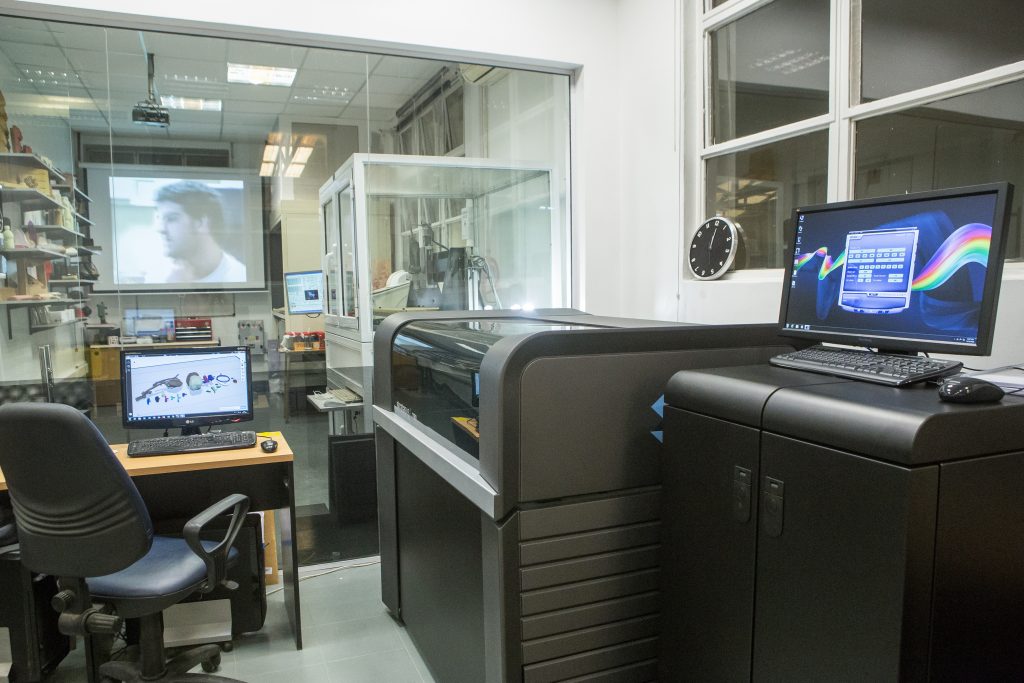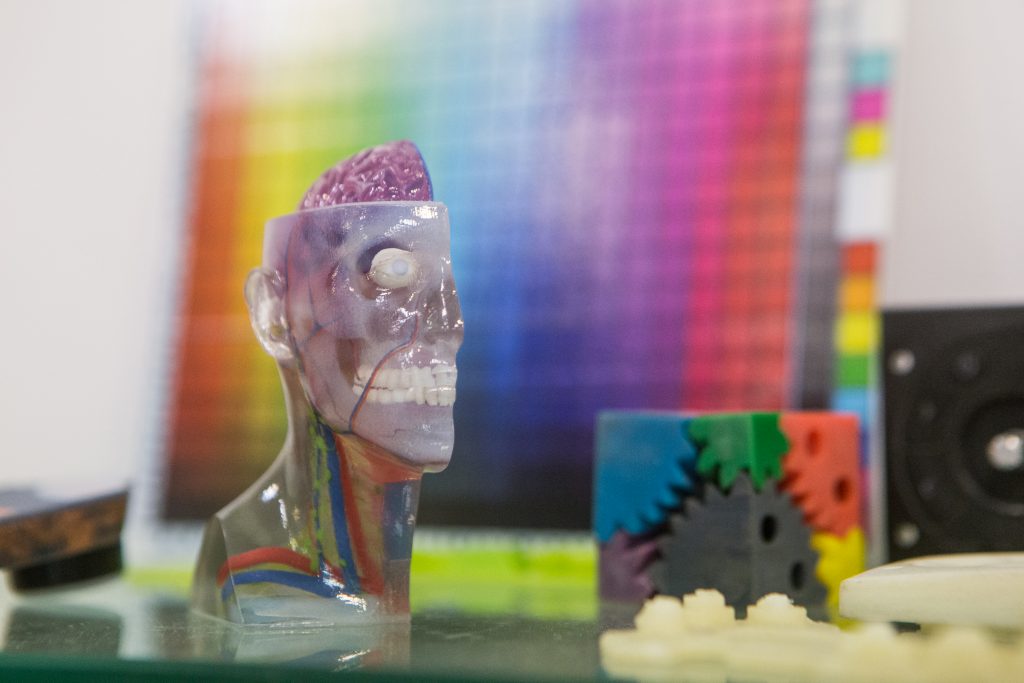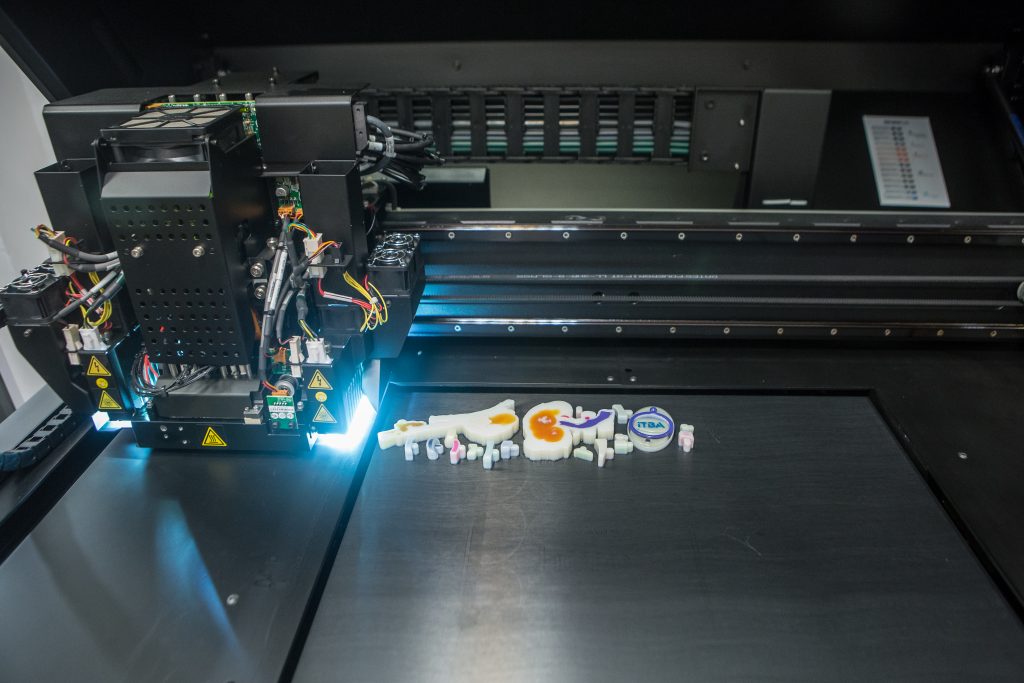3DPrint.com & SmarTech to Join Inside 3D Printing in Seoul as Co-Producers

The global trend of ‘digitization’, ‘convergence’ and ‘democratization’ has had a profound impact on every industry and sector from the most innovative to those regarded as the most conservative. One of these trends is additive manufacturing, called 3D printing.
3D printing creates unprecedented added value for industries such as manufacturing, medical, dental, aerospace, automobile, molding and tooling, architecture, jewelry and fashion. This ranges from the mass production of prototypes, complex aerospace parts to small batch production of discontinued automotive parts, personalized prosthetic limbs, and orthodontics. It is always best to have an opportunity to explore the latest additive manufacturing trends and technology in one place at a time.
Inside 3D Printing, the world’s most prestigious 3D printing event, returns to Seoul, Korea on June 26-28th, 2019 and showcases the newest products, technologies, and materials in 3D printing, 3D scanning, CAD/CAM/CAE, metrology and inspection technologies.
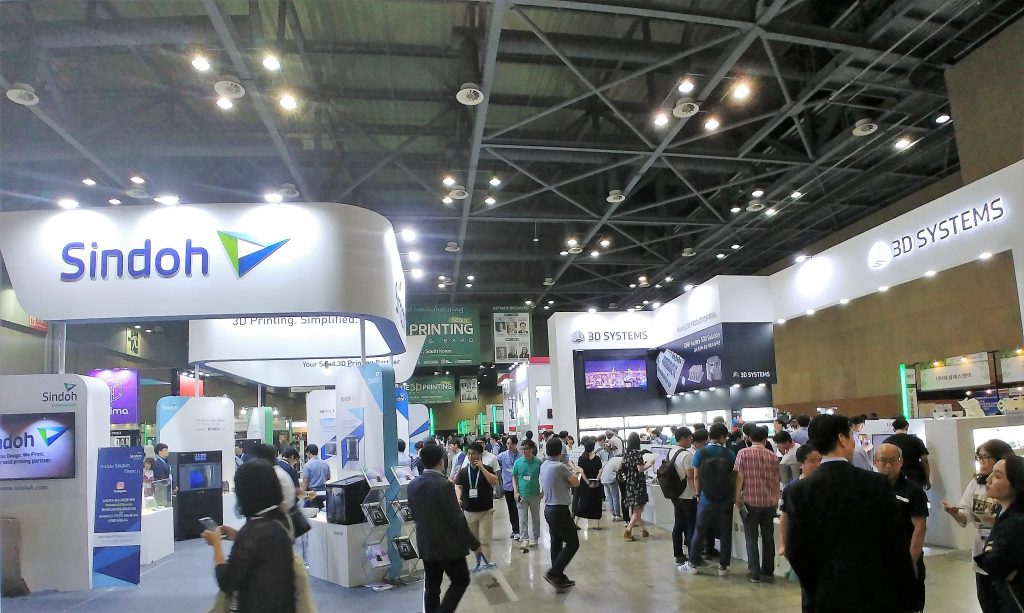
Inside 3D printing started in New York in 2013, and travels around 8 major cities including Sydney, Dusseldorf, Mumbai, Seoul and Sao Paulo. It is the sixth time this year in Seoul, and it is held jointly with 3DR Holdings and KINTEX (Korea International Exhibition Center) in Korea.
In particular, 3DPRINT.COM, and SmarTech Markets Publishing, a global market research organization were confirmed to join Inside 3D Printing in Seoul as co-producers. This collaboration among key industry players will enhance the quality and branding of the event.
In 2018, over 10,000 attendees from 27 countries as well as 85 exhibitors and sponsors participated Inside 3D Printing in Seoul. The conference is part of a three-day event that includes an international conference in 4 tracks and a dedicated trade show in addition to various networking opportunities.
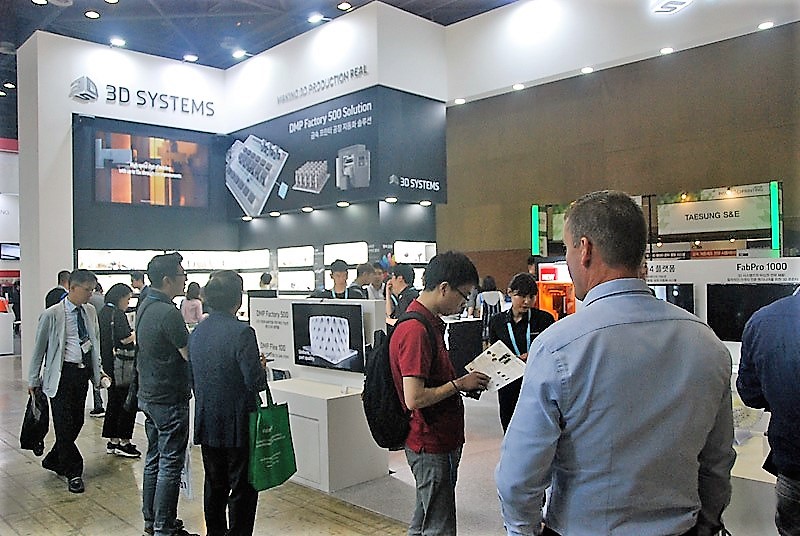
Over 100 exhibitors including HP, EOS, German RepRap, XYZ Printing as well as Korean major players as Hanil Protech, Carima, Trotec Korea, Prototech and Hephzibah will join this year’s event. Not only top brand’s 3D printers and scanners but a variety of AM applications including affordable desktop metal 3d printer, hybrid 3D machinery with CNC engraving, large-sized industrial 3d printer and CAD/CAM/CAE software will be showcased onsite this year.
“The participation of 3DPRINT.COM and SmarTech Markets Publishing as co-producers will further upgrade Inside 3D Printing and provide the best marketing platform for our exhibitors, sponsors and 10,000+ buyers from around the world.” said Alan Meckler, Managing Partner, 3DR Holdings.
If interested in sponsorship opportunities or conference registration for the forthcoming Seoul event, please contact Inside 3D Printing Secretariat (Inside3dprinting@kintex.com) or visit our website for more details.
Latin America Just Got Its First Stratasys J750 3D Printer
The 3D printing community in Argentina has recently pushed forth into new horizons with the acquisition of the first Stratasys J750 in Latin America.The state-of-the-art model arrived in December of last year at one of the top engineering universities in Argentina and will aid researchers in medicine and industry related endeavours. The machine is part of an ongoing effort at the country’s top engineering university, the Technological Institute of Buenos Aires (ITBA), to incorporate 3D printing to its programme. Students, faculty and staff now have access to eight 3D printers in a facility that is open every day.
Officially inaugurated in 2009, the University’s Digital Manufacturing Laboratory promises to place ITBA in a privileged position in the use of this technology throughout Latin America. The Stratasys J750 PolyJet 3D printer is designed to carry out surgical simulations, medical preparations, surgical guides and development of final products for industrial use. Both faculty and students have access to the lab’s additive manufacturing equipment housed at the university’s main building in the City of Buenos Aires which also includes two Fortus 250mc, a Fortus 450mc, an Objet Alaris30, a CNC machine and two desktop printers.
“3D printing in Argentina is having a huge impact on medicine and industry, and it’s also where most universities are developing their additive manufacturing processes,” said ITBA professor and the 3D Lab’s head of operations Jorge Leporati.
According to Leporati, in the future they hope to build bone parts, prostheses that will be inserted inside the body, and surgical simulations.
“We recently created the missing part of a human skull and also aided an oncology specialist at Garrahan Children’s Hospital in Buenos Aires who needed to perform a complex operation of a kidney tumor,” explained the professor. “We printed the child’s organ to scale, simulating the hardness of the nerves and tissues helping the surgeon better prepare for the actual operation and thus making it less risky,” he continued.
It took 10 years for the Lab to get to where it is now, but with 3D printing becoming more popular and prevalent in industry and medical procedures, having access to this technology is important. The use of the lab and its facilities are currently being integrated into the Engineering and Industrial Design programmes. The laboratory will support joint research, materials development, testing of 3D printing technologies and new processes. Two applications that will be worth highlighting in the Lab’s future are impressions of pre-surgical models and 3D bioprinting. The development of realistic simulators for surgery, will allow the doctors to know exactly what they will encounter during a procedure, increasing safety and reducing costs, as well as facilitating the development of manual medical skills for students of medicine or professionals who are starting out in their careers, and it will also rule out the use of corpses and real tissue.
The University is focused on fostering new product development and innovation with business and industry while providing sophisticated parts for customer companies that are interested in the learning opportunities that this technology brings. Working closely with some of the most interesting R&D departments in industry -such as steel tube manufacturer giant Techint– to develop the design of the prototypes that they want.
“We don’t just do the prototypes, we also work closely with the company educating and accompanying them in digitalised manufacturing so they can fully participate in the process. In Argentina a lot of the industrial firms still don’t comprehend the extent of 3D printing and it’s importance in saving time and money,” suggested Leporati.
The Lab has a wealth of new opportunities.
“For everyday users, this lab offers an added degree of quality for their projects, outside companies have the opportunity to develop prototypes in our Laboratory making the processes quicker and more efficient. Additionally, we also have plans to expand the lab’s capabilities by installing metal printers, for aluminum and titanium, as well as incorporating voxel based techniques,” explained the professor.
3D printing in Argentina is getting a bigger thrust from the academic community. While quite a few companies are starting to develop this type of equipment for industrial and commercial use, the machines are mostly aimed at making prototypes and not at manufacturing high-end products. In the future, they will play a more important role in production processes and in the manufacturing of small parts.
Still, Argentina is one step behind compared to the rest of the world and the Latin American region, especially when measured against Brazil or Chile. The expansion of this type of technology is hindered by regulations, a lack of investment in technology and an economic recession. Additionally, we cannot forget that the certifications, costs, requirements and training in 3D printing make implementations slower in Argentina. Local universities and other academic institutions are becoming quite prolific in 3D printing (especially in the health sector) but this success still cannot be replicated within the entrepreneurial community. This creates lag in 3D printing adoption. Furthermore, a lot of different rules exist at the local, state and federal level. In Argentina, rules and rates are subject to frequent adjustments and legislative changes, especially during periods of economic stress, making the production and development of these printers quite a risky endeavor. All of this makes “made in Argentina” printers very rare indeed. It seems for now that importing the world’s best is the best way forward for 3D printing in Argentina.
Farsoon Technologies debuts high-speed 3D printing Flight Technology, partners with Arkema and Autodesk
VELO3D enhances Flow software for metal 3D printing
Google Home Minnie #3DPrinting #3DThursday
nshoe74 shared this project on Thingiverse!
My wife wanted a Minnie stand instead. I remixed the Google Home Mini holder from Simomura’s R2D2 body, and the ears and bow from zacleung’s Minnie Mouse bust to create this design.
There are several versions included in the STL files. One file with the entire model complete. Then files with the individual pieces if your printer cannot handle the entire print at once.
I have no idea how well the entire model or the full ears & bow print. My build area is pretty small. So, i have to print this using 4 separate prints and then assemble them.

Every Thursday is #3dthursday here at Adafruit! The DIY 3D printing community has passion and dedication for making solid objects from digital models. Recently, we have noticed electronics projects integrated with 3D printed enclosures, brackets, and sculptures, so each Thursday we celebrate and highlight these bold pioneers!
Have you considered building a 3D project around an Arduino or other microcontroller? How about printing a bracket to mount your Raspberry Pi to the back of your HD monitor? And don’t forget the countless LED projects that are possible when you are modeling your projects in 3D!
American Tic Tac Solder Dispenser #3DThursday #3DPrinting
Shared by Haku3D on Thingiverse:
This is for the American 29g size Tic Tac box, big big thanks to the user Rccajack https://www.thingiverse.com/Rccajack/about for providing the internal dimensions and printing a couple of test prints to make sure this version fits properly.
The photo of the finished print in the Orange Tic Tac box is Rccajack’s print of this verison as we only have 16g & 49g boxes in the UK, I printed mine in red+white+blue because it seemed fitting
Download the files and learn more

Every Thursday is #3dthursday here at Adafruit! The DIY 3D printing community has passion and dedication for making solid objects from digital models. Recently, we have noticed electronics projects integrated with 3D printed enclosures, brackets, and sculptures, so each Thursday we celebrate and highlight these bold pioneers!
Have you considered building a 3D project around an Arduino or other microcontroller? How about printing a bracket to mount your Raspberry Pi to the back of your HD monitor? And don’t forget the countless LED projects that are possible when you are modeling your projects in 3D!
Jupiter Lamp Base #3DThursday #3DPrinting
Shared by novakvlast on Thingiverse:
Another take on Jupiter lamp stand. This time it’s designed to fit a cheap battery box with USB port to power an LED light.
Download the files and learn more

Every Thursday is #3dthursday here at Adafruit! The DIY 3D printing community has passion and dedication for making solid objects from digital models. Recently, we have noticed electronics projects integrated with 3D printed enclosures, brackets, and sculptures, so each Thursday we celebrate and highlight these bold pioneers!
Have you considered building a 3D project around an Arduino or other microcontroller? How about printing a bracket to mount your Raspberry Pi to the back of your HD monitor? And don’t forget the countless LED projects that are possible when you are modeling your projects in 3D!
maker glasses using shutterglass light valve #3DPRINTING #3DTHURSDAY
uvwxy shared this project on Thingiverse!

Every Thursday is #3dthursday here at Adafruit! The DIY 3D printing community has passion and dedication for making solid objects from digital models. Recently, we have noticed electronics projects integrated with 3D printed enclosures, brackets, and sculptures, so each Thursday we celebrate and highlight these bold pioneers!
Have you considered building a 3D project around an Arduino or other microcontroller? How about printing a bracket to mount your Raspberry Pi to the back of your HD monitor? And don’t forget the countless LED projects that are possible when you are modeling your projects in 3D!
TCT Asia: Ultimaker Introduces Cloud-Based Platform and New 3D Printing Material Alliance Program Partners
The TCT Asia show began today in Shanghai, and desktop 3D printing leader Ultimaker is one of the attendees. The Dutch company made some important announcements at the event today, including the launch of its future-ready Ultimaker Cloud platform, which was designed to support the professional 3D printing workflow and will help speed up the adoption of 3D printing.
As the world transitions to local digital manufacturing, we need a platform solution that will not only make the user workflow more simple but also hasten this transition, while ensuring compatibility with multiple materials and software applications. Due to Ultimaker’s open strategy, important industry partners, like material manufacturers and CAD providers, can integrate with its new cloud-based platform, which will offer more value to users and make the 3D printing experience seamless and reliable.
“Ultimaker Cloud forms the foundation for future value propositions provided by Ultimaker and key industry partners. This is a crucial next step in our journey to speed up the world’s transition to local digital manufacturing,” said Jos Burger, Ultimaker CEO. “I have no doubt that our enabling platform, formed with our global network of software and material partners, makes Ultimaker the preferred solution in the desktop space.”
The first cloud services the platform offers include remote 3D printing, which will provide monitoring and allow print jobs to sent from anywhere to network-enabled Ultimaker 3D printers. Ultimaker Cloud also provides unlimited access to the Marketplace, where registered users can browse materials thanks to exclusive access to print profiles, as well as give feedback to the community and plugin contributors through a rating option. In addition, optimized settings for ideal print results are automatically populated in Ultimaker’s Cura software through the Marketplace. Finally, Ultimaker Cloud offers a way to backup user settings for easier remote access.
 Ultimaker Cloud will be available for download on March 19th, which is also when Ultimaker Cura 4.0, with its updated user interface, will be launched.
Ultimaker Cloud will be available for download on March 19th, which is also when Ultimaker Cura 4.0, with its updated user interface, will be launched.
This new cloud-based platform isn’t the only news Ultimaker announced at TCT Asia. The company’s Material Alliance Program, which was established last year, has three new members: Polymaker, eSUN, and Essentium.
“The growing importance of 3D printing gives us – as a leader in desktop 3D printing – an important role in ensuring a perfect collaboration between hardware, software and materials. By offering material profiles directly to millions of end users via the Ultimaker Marketplace, we unlock new 3D printing applications for different industries,” said Burger. “Essentium, eSUN, and Polymaker and are well-respected material companies, offering unique material properties that are relevant for engineers working in a wide range of industries. I am proud to recognize their commitment to the Ultimaker Material Alliance during TCT ASIA.”
This means that there will now be more choices for applications and materials in FFF 3D printing, as print profiles for these three companies will now be available for download in the Ultimaker Marketplace. Users can just choose a material profile and quickly begin a print.
“FFF 3D printing remains the most practical and accessible of all 3D printing technologies. The three materials we offer via the Ultimaker Marketplace, including PolyMide PA6-CF, PolyMide CoPA and PolyCast, are among the most unique and advanced materials in our portfolio,” stated Polymaker president Dr. Xiaofan Luo. “I believe they will open up countless new applications for a greater number of engineers.”
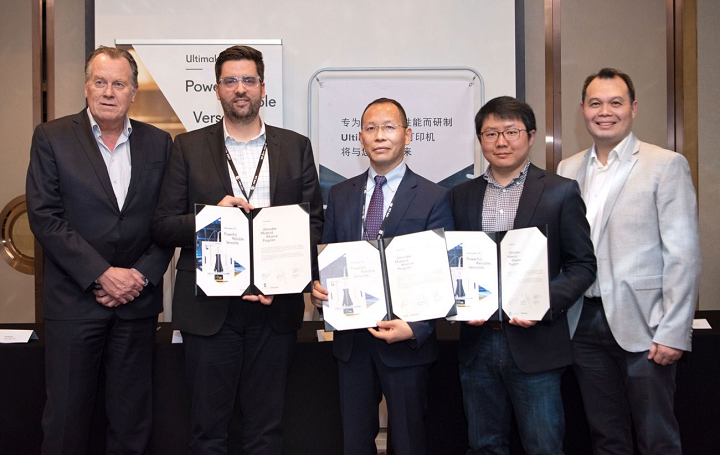
L-R: From Jos Burger, CEO Ultimaker; Dr. Blake Teipel, CEO Essentium; Dr. Yihu Yang, CEO eSUN; Dr. Xiaofan Luo, President Polymaker; Benjamin Tan, VP APAC Ultimaker
Each new member of the alliance brings something important to the table. For instance, recycling is a topic that’s widely discussed around the world, and it seems like helpful initiatives are popping up all over.
“We are specialized in the industrialization of biodegradable polymers. We are delighted to join the Ultimaker Materials Alliance Program with material print profiles of PETG, ePA-CF, and HIPS (High Impact Polystyrene), since it allows us to speed up the development of eco-friendly 3D printed products by using renewable resources,” said eSUN’s CEO Dr. Yihu Yang.
So engineers in the electronics industry can benefit from FFF 3D printing, the materials used must be ESD safe. Now, print profiles in the Ultimaker Marketplace are available with just these properties.
“At Essentium we are committed to creating industrial solutions for the world’s top manufacturers and bridging the gap between 3D printing and machining. We have partnered with BASF, the world’s largest chemical producer, to create the Ultrafuse-Z line, which is a series of ESD safe filaments that are powered by Essentium,” explained Dr. Blake Teipel, CEO of Essentium. “We offer material print profiles for Ultrafuse-Z PCTG in the Ultimaker Marketplace, an industrial grade filament that is specifically formulated to be ESD safe.”
Discuss this news and other 3D printing topics at 3DPrintBoard.com or share your thoughts in the Facebook comments below.
[Source/Images: Ultimaker]

